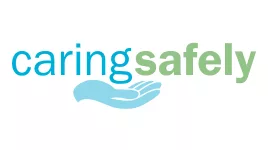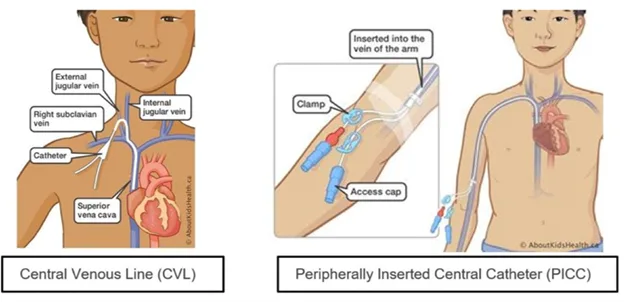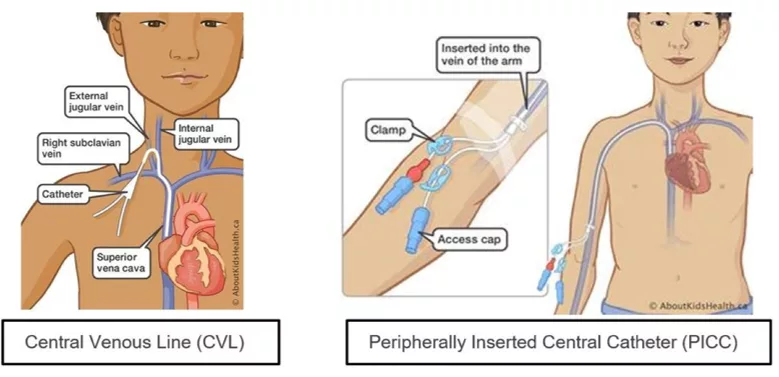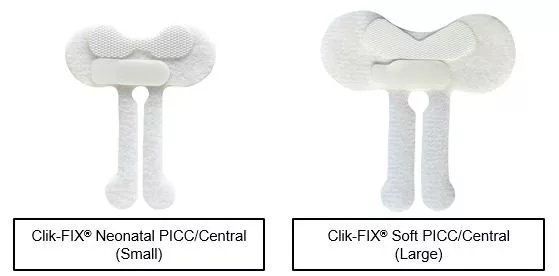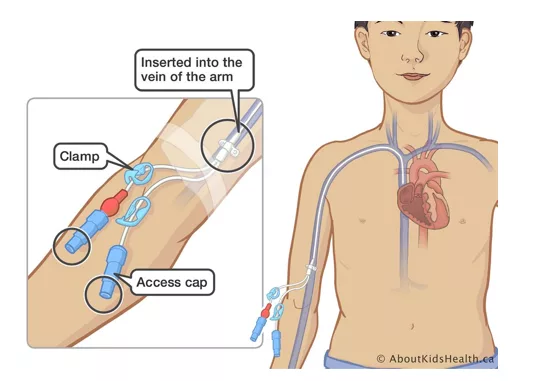SITUATION:
This QuickHit was developed in response to Connected Care virtual visits, where family caregivers observed variation among home care providers in the time spent scrubbing and drying the top and sides of their child’s CVAD cap before access.
BACKGROUND:
Many children with medical complexity rely on CVADs in home and community care for long-term intravenous therapy including medication administration, parenteral nutrition, dialysis, hydration, and blood sampling. Types of CVADs include central venous lines (CVL) and peripherally inserted central catheters (PICC).
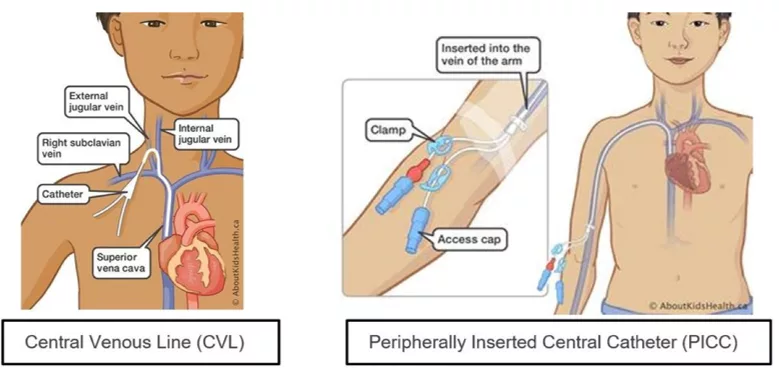
Children discharged from hospital to home with CVADs are at risk for Central Line Associated Blood Stream Infections (CLABSIs). These are serious infections that occur when microorganisms enter the blood stream either through the insertion site of the CVAD (key site) or through the access caps (key part).
When accessing the CVAD, the outside of the cap is considered contaminated until it is cleaned with 70% alcohol, which has strong antimicrobial properties and dries quickly. Effective removal of bacteria depends on both thorough friction during cleaning and allowing enough time for the alcohol to fully dry.

This photo taken under black light shows how scrubbing the cap for 15 seconds removes significantly more bacteria.
ASSESSMENT:
Aseptic non-touch technique (ANTT) is used to prevent infection when accessing CVADs and during dressing and cap changes. ANTT ensures asepsis and reduces the risk of CLABSIs by identifying and protecting key sites and key parts through proper hand hygiene, using a non-touch technique, employing new single-use supplies, and thoroughly cleaning existing key parts to render them aseptic prior to access.
When preparing for CVAD care, assess and plan for ANTT by:
- Identifying key sites and key parts
- Using a designated flat, stable, and clean surface (some families may use a designated cookie tray as a work surface)
- Organizing all necessary supplies ahead of time
- Choosing a reliable method to time scrubbing and drying, rather than counting seconds, as people often count too quickly. For example:
- Use an analog clock
- Set a timer on your phone
- Sing the ‘ABCs’ song.
RECOMMENDATION:
Connected Care recommends the ’30 or it’s dirty’ rule to help prevent infection in child with CVADs when accessing the CVAD cap:
- Perform hand hygiene and put on clean gloves.
- Using an 70% alcohol swab, scrub the hub of the cap (top and sides) vigorously for 15 seconds.
- Allow the cap to air dry for an additional 15 seconds.
- When accessing the cap between syringes, use a second alcohol swab to swipe. Use the swab to remove any visible blood or contaminants.
- If the cap becomes contaminated, repeat the 15-second scrub with a new alcohol swab and allow it to air dry for another 15 seconds.
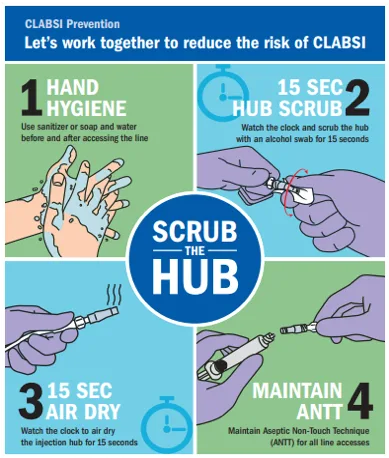
More Information
For additional information on maintaining a central venous access device, visit AboutKidsHealth, or consider a Connected Care Live consult.

